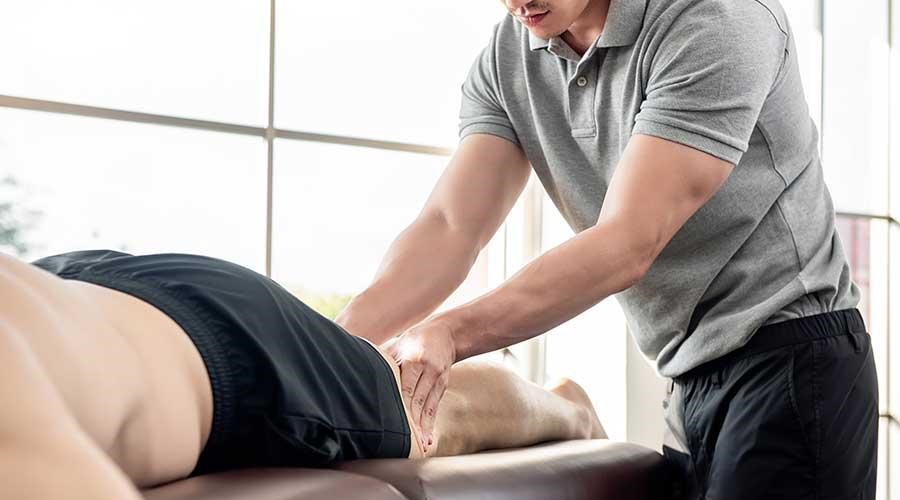Sports massage therapy has become an integral part of athletes’ training regimens and injury rehabilitation programs. This specialized form of massage focuses on preventing injuries, enhancing performance, and aiding in the recovery process. Let’s delve into the various techniques employed in sports massage therapy and their benefits.
Benefits of Sports Massage Therapy
1) Injury Prevention
One of the primary benefits of sports massage therapy is its ability to prevent injuries. Through targeted manipulation of soft tissues, sports massage helps alleviate muscle tension and improve flexibility, reducing the risk of strains, sprains, and overuse injuries.
2) Improved Performance
By promoting blood flow to the muscles and enhancing tissue elasticity, sports massage can significantly improve athletic performance. Athletes often experience increased range of motion and muscle strength, allowing them to perform at their peak during training and competitions.
3) Faster Recovery
After intense physical activity, muscles may become fatigued and sore due to the buildup of lactic acid and other waste products. Sports massage therapy aids in flushing out these toxins, reducing muscle soreness, and accelerating the recovery process, enabling athletes to bounce back quicker and train more effectively.
Techniques Used in Sports Massage Therapy
1) Effleurage
Effleurage involves long, sweeping strokes applied with varying pressure to warm up the muscles and prepare them for deeper work. This technique helps improve circulation, relax the muscles, and promote overall relaxation.
2) Petrissage
Petrissage consists of kneading, squeezing, and lifting movements that target deeper layers of muscle tissue. This technique helps release tension, break up adhesions, and improve muscle flexibility and range of motion.
3) Friction
Friction involves applying deep pressure and circular motions to specific areas of muscle tightness or adhesions. This technique helps break down scar tissue, increase blood flow to the affected area, and alleviate pain and stiffness.
4) Tapotement
Tapotement, or percussion, involves rhythmic tapping, chopping, and pounding movements performed with the hands or fists. This technique helps stimulate circulation, invigorate the muscles, and relieve tension.
Deep Tissue Massage in Sports Therapy
Deep tissue massage targets the deeper layers of muscle and fascia to release chronic tension and adhesions. This intensive technique can be beneficial for athletes with chronic pain, limited mobility, or repetitive strain injuries.
Trigger Point Therapy
Trigger point therapy focuses on identifying and deactivating trigger points, localized areas of muscle tightness and tenderness. By applying pressure to these points, sports massage therapists can relieve referred pain and restore normal muscle function.
Stretching in Sports Massage Therapy
Stretching is often incorporated into sports massage sessions to improve muscle flexibility, range of motion, and joint mobility. Dynamic and static stretching techniques help elongate muscles, prevent injuries, and enhance athletic performance.
Pre-Event vs. Post-Event Sports Massage
Pre-event sports massage focuses on warming up the muscles, increasing circulation, and preparing the athlete for activity. Post-event sports massage aims to relax the muscles, reduce soreness, and promote recovery after intense physical exertion.
Sports Massage for Specific Injuries
Sports massage therapy can be tailored to address specific injuries common among athletes, such as tendonitis, shin splints, and IT band syndrome. By targeting affected muscles and tissues, sports massage can help alleviate pain, restore function, and expedite healing.
Integrating Other Modalities with Sports Massage Therapy
Sports massage therapy can be complemented by other modalities such as acupuncture, chiropractic care, and physical therapy to enhance treatment outcomes and promote overall wellness.
Sports Massage for Athletes of Different Levels
Whether amateur or professional, athletes can benefit from sports massage therapy to improve performance, prevent injuries, and accelerate recovery. Sports massage techniques can be customized to meet the unique needs and goals of athletes at all levels of competition.
Considerations for Sports Massage in London
In a bustling city like London, where sports and fitness are integral parts of daily life, sports massage therapy plays a crucial role in supporting the health and well-being of athletes and active individuals. With numerous clinics and practitioners specializing in sports massage, London offers a wealth of options for those seeking professional care.
The Role of Osteopathy and Pilates in Complementing Sports Massage Therapy
In addition to sports massage therapy, osteopathy and Pilates are popular modalities utilized by athletes to improve performance, prevent injuries, and enhance overall health and wellness. Osteopathy focuses on treating musculoskeletal imbalances and dysfunctions through manual techniques, while Pilates emphasizes core strength, flexibility, and body awareness.
Conclusion:
London Osteopathy Pilates offers comprehensive sports massage therapy services designed to optimize athletic performance, prevent injuries, and aid in recovery. Regardless of whether you’re a professional athlete, a weekend warrior, or a fitness enthusiast, integrating sports massage into your wellness routine can result in enhanced physical health and improved athletic accomplishments. Our skilled therapists utilize a range of techniques tailored to meet your specific needs and goals. By targeting muscle tension, promoting circulation, and alleviating stress, sports massage can help you maintain peak physical condition, prevent injuries, and recover more efficiently. Trust London Osteopathy Pilates to provide the highest quality sports massage therapy to support your overall well-being and athletic success.



